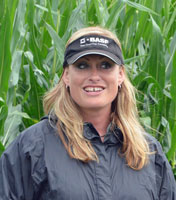 The National Council of Farmer Cooperatives has joined Field to Market: The Alliance for Sustainable Agriculture. This initiative brings together a diverse group of agribusinesses in defining, measuring and advancing the sustainability of food, fiber and fuel production. NCFC represents nearly 3,000 farmer cooperatives in the U.S., whose members include the majority of the nations 2 million farmers and ranchers.
The National Council of Farmer Cooperatives has joined Field to Market: The Alliance for Sustainable Agriculture. This initiative brings together a diverse group of agribusinesses in defining, measuring and advancing the sustainability of food, fiber and fuel production. NCFC represents nearly 3,000 farmer cooperatives in the U.S., whose members include the majority of the nations 2 million farmers and ranchers.
“Sustainability is an emerging priority for farmer cooperatives as we work to demonstrate how the U.S. agriculture industry is improving against key environmental goals and accelerate the pace of progress,” said Charles Conner, president and CEO of NCFC. “By joining Field to Market, we aim to provide tangible solutions to help co-ops respond to consumer and supply chain demands in areas such as sustainability, social responsibility and transparency.”
 Working together with grower organizations, academia, conservation groups, public sector partners and leading companies, NCFC will help to catalyze opportunities for continuous improvement in productivity, environmental quality and human well-being across the agricultural value chain.
Working together with grower organizations, academia, conservation groups, public sector partners and leading companies, NCFC will help to catalyze opportunities for continuous improvement in productivity, environmental quality and human well-being across the agricultural value chain.
“Farmer cooperatives play a vital role in the food and agriculture sector and are a critical partner in advancing sustainability at the landscape level,” said Rod Snyder, president of Field to Market. “We are pleased to welcome NCFC to Field to Market and look forward to developing strategies for how co-ops can partner with the agricultural supply chain to help farmers improve their productivity, profitability and environmental outcomes.”













